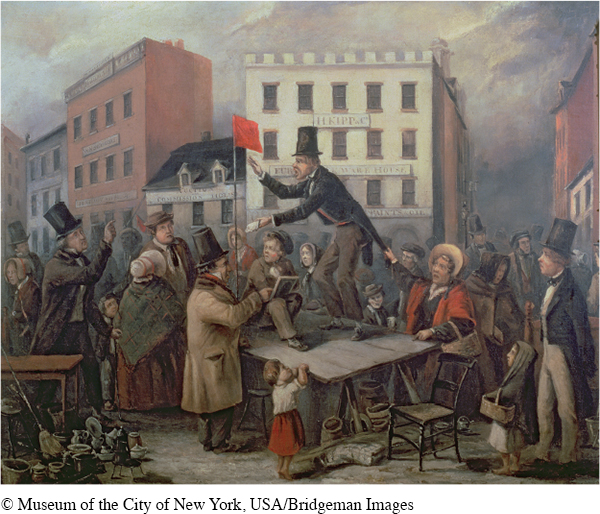The Panic of 1819
The panic of 1819 resulted primarily from irresponsible banking practices in the United States and was deepened by the declining overseas demand for American goods, especially cotton. Beginning in 1816, American banks, including the newly chartered Second Bank of the United States, loaned huge sums to settlers seeking land on the frontier and merchants and manufacturers expanding their businesses. Many loans were not backed by sufficient collateral because many banks assumed that continued economic growth would ensure repayment. Then, as agricultural production in Europe revived with the end of the Napoleonic Wars, the demand for American foodstuffs dropped sharply. Farm income plummeted by roughly one-third in the late 1810s.
In 1818 the directors of the Second Bank, fearing a continued expansion of the money supply, tightened the credit they provided to branch banks. This sudden effort to curtail credit led to economic panic. Some branch banks failed immediately. Others survived by calling in loans to companies and individuals, who in turn demanded repayment from those to whom they had extended credit. The chain of indebtedness pushed many people to the brink of economic ruin just as factory owners cut their workforce and merchants decreased orders for new goods. Individuals and businesses faced bankruptcy and foreclosure, and property values fell sharply.

Bankruptcies, foreclosures, unemployment, and poverty spread across the country. Cotton farmers were especially hard hit by declining exports and falling prices. Planters who had gone into debt to purchase land in Alabama and Mississippi were unable to pay their mortgages. Many western residents, who had invested all they had in new farms, lost their land or simply stopped paying their mortgages. This further strained state banks, some of which collapsed, leaving the national bank holding mortgages on vast amounts of western territory.
Many Americans viewed banks as the cause of the panic. Some states defied the Constitution and the Supreme Court by trying to tax Second Bank branches or printing state banknotes with no specie (gold or silver) to back them. Some Americans called for government relief, but there was no system to provide the kinds of assistance needed. When Congress debated how to reignite the nation’s economy, regional differences quickly appeared. Northern manufacturers called for even higher tariffs to protect them from foreign competition, but southern planters argued that high tariffs raised the price of manufactured goods while agricultural profits declined. Meanwhile, workingmen and small farmers feared that their economic needs were being ignored by politicians tied to bankers, planters, manufacturers, and merchants.
By 1823 the panic had largely dissipated, but the prolonged economic crisis shook national confidence, and citizens became more skeptical of federal authority and more suspicious of banks. From 1819 until the Civil War, one of the greatest limitations on national growth remained the cycle of economic expansion and contraction.
Exploring American HistoriesPrinted Page 288
Exploring American Histories Value EditionPrinted Page 216
Chapter Timeline